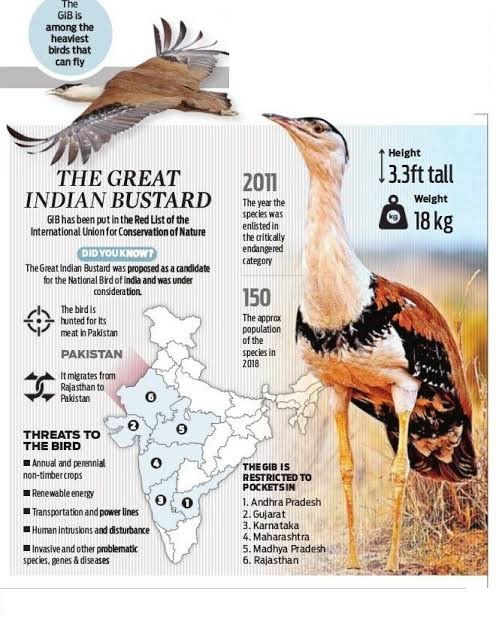Free Courses Sale ends Soon, Get It Now


Free Courses Sale ends Soon, Get It Now



Disclaimer: Copyright infringement not intended.
Context: A Supreme Court appointed-committee has recommended that, in order to protect the endangered Great Indian Bustard, close to 800 km, or about 10% of the length of proposed power lines in the Thar and Kutch deserts of Rajasthan and Gujarat should be re-routed or made to go underground.
Details:
.jpeg)
Great Indian Bustard (GIB):

Steps taken by the Government for protection of Great Indian Bustards in the country:
MAINS QUESTION:
Q.Conservation of Great Indian Bustard has proved to be a hindrance in India’s march towards solar power. Examine. (150 words, 10 marks)
© 2024 iasgyan. All right reserved